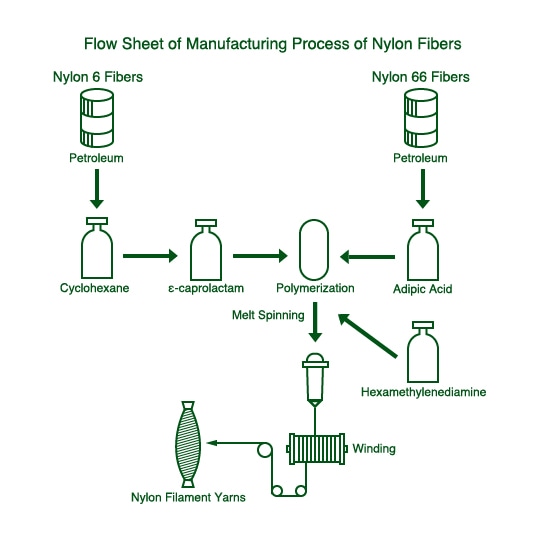Nylon fibers are one of the fibers having the longest history among synthetic fibers. They are used for a variety of uses from clothing to home furnishings and industrial uses.
In nylon fibers, there are many types depending on the raw materials. The fibers most manufactured in Japan is “Nylon 6” fibers. In addition, “Nylon 66” fibers, rather resistant to heat, are also manufactured. Recently, “Nylon 46” fibers, improving their resistance to heat with higher than 290 in melting point, are put into practical application.
Comparing other synthetic fibers, great advantages of nylon fibers are resistant to abrasion and flexing, and of supple tactile feeling. Accordingly, thin, light and flexible woven or knitted fabric can be manufactured. Further-more, an advantage of easily dyeability makes possibility recent year to develop many fabrics for clothing.
Nylon fibers can be produced in a variety of cross-section and fineness. Composite fibers, having unique appearance and tactile feeling, can also be produced by combining with other types of fibers. Heat storage or warmth retention fibers consisting of extremely fine filament yarns in which carbonaceous material converting the light to heat is inserted. Anti-static nylon fibers inhibiting electro-static charge. Transparent nylon fibers exhibiting more transparent and beautiful colors. Thus a wide variety of nylon fibers are available giving much more performances and fabric hand.
Almost all nylon fibers are filament yarns ranging from very fine to coarse denier to be used for clothing such as sport wear, lingerie, pantyhose; home furnishing as carpets; and industrial uses such as fishing nets, ropes, and tire cords.
Staple fibers are used, in the yarns blended with wool and acrylic fibers, for clothing; home furnishing such as carpets, upholstery; and other fields of sundries

